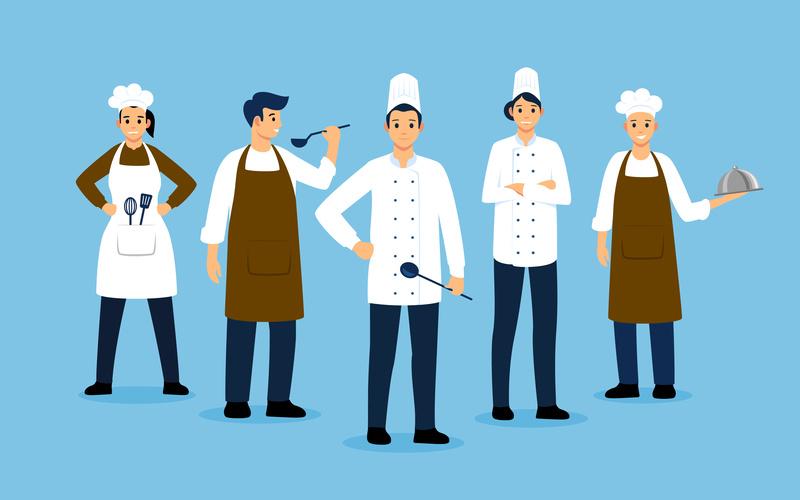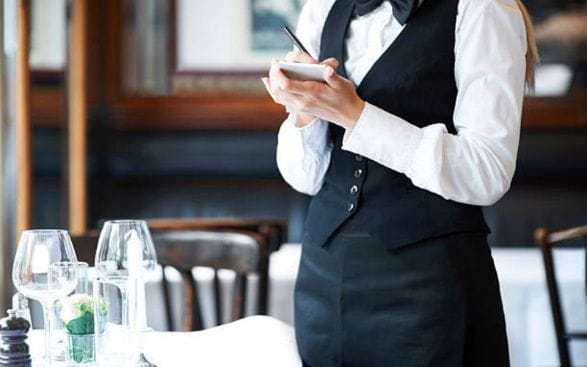What is the Best Type of Uniform for a Restaurant?

Uniforms play a vital role in the success of a restaurant, going far beyond mere attire. They create a professional image, enhance brand identity, and set the tone for the dining experience. For customers, seeing staff in clean, well-designed uniforms fosters trust and confidence in the establishment. For employees, comfortable and functional uniforms improve efficiency and job satisfaction. Whether it’s a chef’s jacket or a server’s apron, the right uniform ensures that the staff looks presentable while meeting the practical demands of a busy restaurant environment.

Selecting the best uniform requires a thoughtful approach, factoring in the restaurant's theme, the type of cuisine served, and the level of formality. Collaboration with a reputable uniform supplier ensures access to high-quality fabrics, durable stitching, and custom designs that align with the brand's identity. From luxurious fine-dining establishments to laid-back bistros, choosing the perfect uniform not only elevates the staff’s appearance but also strengthens the overall customer experience.
Here are some What is the Best Type of Uniform for a Restaurant?
1. Chef Coat
The chef coat is one of the most important pieces of clothing for those working in a restaurant kitchen. Chef coats, crafted from heavy-duty fabric like canvas or cotton blends, shield wearers from high heat, splattering oils, and sharp kitchen tools. The thick material insulates against burns and cuts, making them essential for chefs, sous chefs, and line cooks who face these hazards daily. Chef coats are typically heat-resistant, durable, and easy to clean, making them an ideal choice for the demanding kitchen environment. In addition to their functional qualities, chef coats also symbolize professionalism in the culinary world, with features like double-breasted buttons, which can be reversed if the coat becomes stained. This practical and stylish design helps the kitchen staff maintain a neat and clean appearance.
2. Server Uniform
The server uniform is the face of the restaurant staff. It’s the attire worn by those who interact with customers, take orders, and deliver food and drinks. A server uniform should strike a balance between formality and comfort, as servers often work long shifts and are on their feet for extended periods. The uniform’s colour and style often reflect the type of restaurant—fine dining establishments may lean toward black, white, or darker shades, while more casual eateries may allow for more colourful or relaxed outfits.

Comfort is also key in choosing the right server uniform. Fabrics like cotton or polyester blends are ideal as they are breathable and easy to care for. Stretchy fabrics are ideal for flexibility, helping servers move freely while carrying trays. The uniform should fit well, keeping staff neat and presentable without restricting movement.
3. Apron
The apron is an essential part of a restaurant uniform, worn by both front and back-of-house staff to protect clothing from stains and spills. Front-of-house staff, such as servers, may wear aprons that are stylish, functional, and serve as a tool for carrying small items like pens, order pads, or wine keys. These aprons are often designed with multiple pockets for convenience. They can be simple in style, often in black or neutral colors, to complement the server uniform.
In the kitchen, aprons are more utilitarian. Kitchen aprons are usually made from lightweight, durable fabric like cotton or polycotton, which can be easily washed after every shift. These aprons help protect against food splashes, hot liquids, and grease. Kitchen staff, especially line cooks, will typically wear longer aprons that cover more of the body for greater protection. A good apron should be adjustable for comfort, offer adequate coverage, and have a functional design with pockets for tools like thermometers, spatulas, or tongs.
4. Busser Uniform
The busser uniform strikes a balance between casual and professional. Bussers play an important role in maintaining cleanliness and assisting with food service, and their attire should be comfortable for tasks such as cleaning tables, resetting dining areas, and running food. A busser’s uniform should be made from quick-drying fabrics that help prevent the buildup of dirt and moisture.

Typically, bussers wear a more casual version of the server uniform—often consisting of a simple, clean shirt paired with durable pants or shorts. The uniform should be professional in appearance yet easy to move around in. Many restaurants opt for comfortable yet stylish cuts that allow for flexibility, ensuring the busser can efficiently complete their tasks without feeling restricted.
5. Pants
In a restaurant setting, pants are an essential part of any uniform, providing comfort and protection for employees in both front and back-of-house roles. For front-of-house staff, restaurants may provide uniform pants or set out pant requirements, leaving employees the option to provide their own. Pants should be comfortable enough to wear during long shifts and durable enough to withstand the wear and tear of everyday duties. In general, dark-colored pants are preferred for a clean and professional appearance, as they are less likely to show stains.
For back-of-house staff, pants are more regulated. Kitchen staff face high heat, splashes, and burns, so their pants should use thicker, more durable materials like cotton or polyester blends. Tighter-fitting pants help prevent accidents, as loose clothing can snag on kitchen equipment. Kitchens are high-risk environments, and ensuring staff members wear the right pants helps reduce the likelihood of burns or injuries.
6. Shoes
The right shoes are critical for all restaurant staff, as they provide protection, comfort, and support during long shifts. While some restaurants may provide shoes for their employees, it’s more common for restaurants to set guidelines on shoe style and let employees bring their own. Non-slip shoes are particularly important in restaurant environments where floors can become wet and greasy. Shoes should be comfortable, with cushioned soles to support the feet during hours of standing or walking.
For kitchen staff, shoes should be heat-resistant to protect against spills of hot liquids or oils. Many restaurants require closed-toe shoes for safety reasons, and it’s important for both kitchen and front-of-house employees to wear shoes that provide ample grip and comfort.
7. Socks
While socks may not be an official part of the kitchen uniform, they can still play an important role in overall safety and comfort. In the kitchen, socks help prevent burns on the legs, particularly for kitchen staff who are exposed to hot surfaces, ovens, and stoves. For both front- and back-of-house staff, choosing the right socks can contribute to a more comfortable shift by providing added support and breathability.
For front-of-house employees, socks should be chosen to complement the uniform and offer comfort. Opt for breathable, moisture-wicking socks to keep feet dry and comfortable during long hours. For kitchen staff, thicker, heat-resistant socks can offer an extra layer of protection from the hazards of the kitchen.
Conclusion
Choosing the best type of uniform for a restaurant is a crucial decision that impacts both staff performance and customer perception. A well-thought-out uniform reflects the restaurant's theme, enhances brand recognition, and ensures practicality for day-to-day operations. Functional uniforms made from breathable and durable fabrics help staff stay comfortable during long shifts while maintaining a polished look. When paired with accessories like aprons or name tags, uniforms not only promote hygiene and professionalism but also contribute to creating a cohesive brand identity.
Collaborating with a trusted uniforms supplier is essential to finding the perfect balance of style, comfort, and quality. Suppliers can provide custom designs that align with the restaurant's vision while ensuring the use of high-grade materials. Investing in the right uniform demonstrates the restaurant’s commitment to professionalism and attention to detail, enhancing customer trust and loyalty. Ultimately, the right choice of uniforms can help create a seamless dining experience where both staff and customers feel valued and comfortable.
- Art
- Causes
- Crafts
- Dance
- Drinks
- Film
- Fitness
- Food
- Jocuri
- Gardening
- Health
- Home
- Literature
- Music
- Networking
- Alte
- Party
- Religion
- Shopping
- Sports
- Theater
- Wellness
- IT, Cloud, Software and Technology


